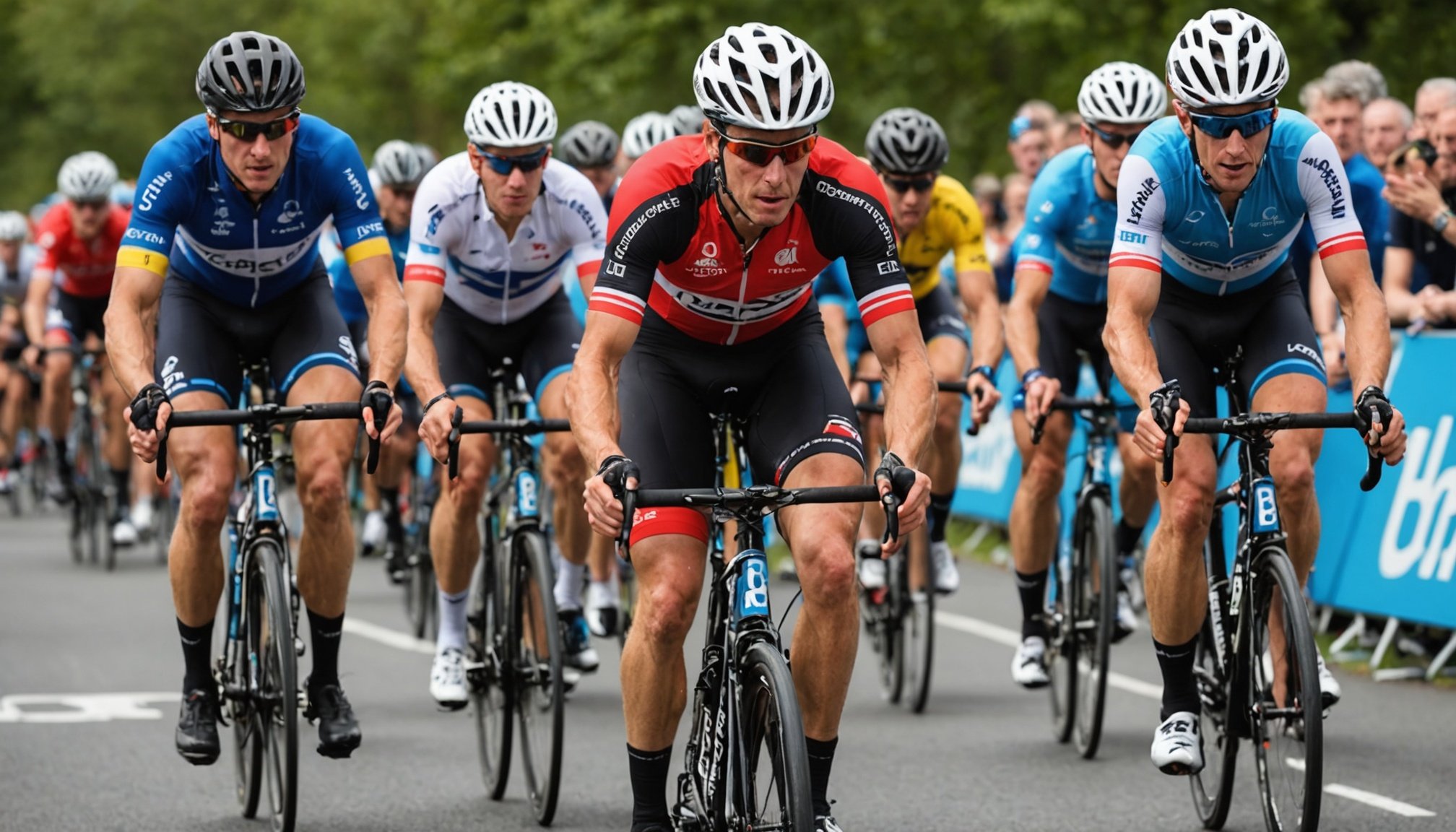Training Techniques for Improved Performance
For amateur cyclists aiming to enhance their performance, adopting effective training techniques is crucial. Crafting a structured training plan not only boosts endurance but also helps manage training loads smartly. A well-structured plan typically includes specific workouts catered to improve strength, speed, and endurance, ensuring a balanced approach to cycling fitness.
Integrating interval training and hill repeats into the routine can significantly enhance fitness levels. Interval training involves alternating between periods of high-intensity effort and recovery, effectively increasing cardiovascular capacity. Hill repeats, on the other hand, focus on building strength and power, crucial for conquering mountainous terrains.
Topic to read : Unlocking community bonds: strategies for uk sports clubs to successfully connect locally
Lastly, embracing cross-training activities—such as swimming, running, or strength training—can complement cycling sessions. These activities help in all-round fitness, reducing the risk of overuse injuries by targeting different muscle groups. Additionally, cross-training can enhance cardiovascular health and maintain motivation by introducing variety to one’s routine.
Adopting these techniques, along with sufficient rest and recovery days, enables cyclists to achieve higher performance levels and enjoy their sport without compromising on health.
Also to discover : Discover your ideal gel blaster for every play style
Nutrition Strategies for Cyclists
Maintaining the right nutrition is vital for cyclists aiming for peak performance in endurance sports. Essential macronutrients such as carbohydrates, proteins, and fats play distinct roles in supporting training and recovery. Carbohydrates are the primary energy source, crucial for high-intensity rides. Proteins aid muscle repair and growth, while fats serve as a long-lasting energy reservoir, especially during prolonged activities.
Pre- and post-ride meal timing is crucial in optimizing energy levels and recovery. A pre-ride meal, rich in carbohydrates and moderate in protein, should be consumed 3-4 hours before an event to fuel the body effectively. Post-ride nutrition focuses on replenishing glycogen stores and repairing muscles. Consuming a balanced meal with carbohydrates and proteins within 30 minutes to 2 hours after a ride accelerates recovery and prepares the body for subsequent training sessions.
Hydration strategies cannot be overlooked in endurance cycling. Dehydration can drastically impair performance and increase fatigue. Cyclists should drink fluids regularly, aiming to replace any fluid and electrolyte loss due to sweating. Incorporating electrolytes in the hydration plan, particularly sodium, potassium, and magnesium, helps maintain balance and reduce cramping. Planning and maintaining a well-rounded nutrition strategy ensures cyclists can sustain energy, enhance recovery, and improve overall performance.
Mental Preparation for Competitions
Embarking on a cycling race without mental preparation is like cycling without a helmet—unfathomable. Setting realistic goals and milestones paves the way for achievement. Goals should be challenging yet attainable, providing a sense of direction and purpose. Break down larger objectives into specific tasks to avoid feeling overwhelmed.
Visualization is a powerful tool to enhance race day performance. By mentally rehearsing scenarios, cyclists build confidence and focus. Imagine the sensation of riding swiftly against the wind while maintaining composure. This mental imagery can dissipate anxiety, turning nervous energy into a performance booster.
Managing anxiety and maintaining focus are paramount during a race. Anxiety often masquerades as excitement, and learning to channel it effectively is key. Practice mindfulness techniques, such as deep breathing, to centre your thoughts and reduce tension. Concentrate on current conditions rather than outcomes, thus anchoring the mind in the present.
In conclusion, achieving peak cycling performance involves a synergy of physical and mental strategies. Setting clear goals, embracing visualization, and managing race-day anxiety can transform stress into success. Integrate these mental strategies into your routine to remain composed and focused, ultimately leading to enhanced cycling performance.
Race Day Strategies
Navigating race days requires a blend of mental acuity, precise planning, and strategic execution. Establishing a pre-race routine lays the foundation for optimal performance, providing familiarity amidst the unpredictability of race dynamics. This routine should include a thorough checklist for essentials, a warm-up to invigorate muscles, and time for mental centering to bolster focus.
Pacing strategies hold paramount importance during a race. Cyclists must attune themselves to their internal rhythm, ensuring energy is distributed evenly throughout the event. By adjusting speeds according to terrain undulations and personal capacity, you mitigate early fatigue and sustain performance to the finish. Understanding your energy reserves can fortify your approach against steep climbs and challenging segments, allowing for strategic accelerations.
The technical aspect shouldn’t be overlooked—gear selection and meticulous mechanical preparation can make or break your race day. Ensure your bike is finely tuned, with components checked for wear and optimum functionality. Assess the racecourse conditions and tailor your equipment, such as tire pressure and gear ratios, to best suit foreseeably changing environments.
Incorporating these strategies reduces stress and maximizes potential, ensuring cyclists are equipped to rise to race day challenges confidently. Stay adaptable, stay prepared, and let your preparation drive your performance.






